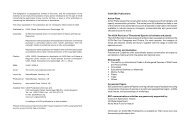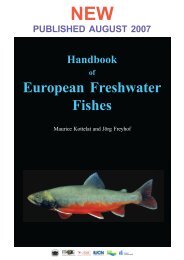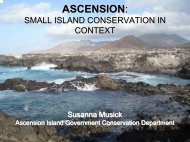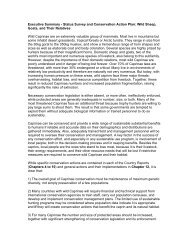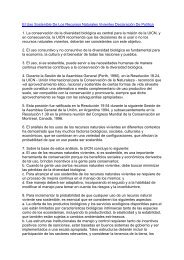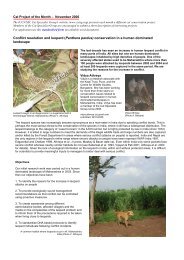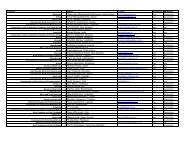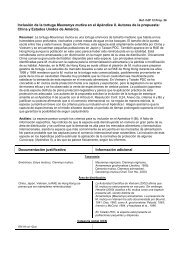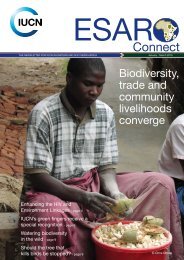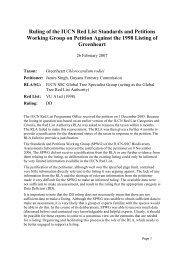Planning education to care for the earth - IUCN Knowledge Network
Planning education to care for the earth - IUCN Knowledge Network
Planning education to care for the earth - IUCN Knowledge Network
You also want an ePaper? Increase the reach of your titles
YUMPU automatically turns print PDFs into web optimized ePapers that Google loves.
<strong>Planning</strong> <strong>education</strong> <strong>to</strong> <strong>care</strong> <strong>for</strong> <strong>the</strong> <strong>earth</strong>Schools are an important target group, as moni<strong>to</strong>ring provides students withreal-life opportunities <strong>to</strong> learn about environmental management. Moni<strong>to</strong>ringcan be included in science and o<strong>the</strong>r curriculum activities.Waterwatch brings many sections of a local community <strong>to</strong>ge<strong>the</strong>r <strong>to</strong> addressan environmental issue which concerns everyone. Groups are encouraged <strong>to</strong>seek sponsorship from <strong>the</strong> local council, businesses and service clubs <strong>to</strong>cover <strong>the</strong> cost of buying moni<strong>to</strong>ring equipment.Funds <strong>for</strong> community groupsThere is tremendous interest in <strong>the</strong> programmes and applications bycommunity groups <strong>for</strong> funds far exceed <strong>the</strong> resources available. In 1993/94only 400 of 1,500 applications submitted under STB and OBT weresuccessful. The maximum grant <strong>to</strong> a project is $20,000 a year, although <strong>the</strong>average is around $5,000. Groups are expected <strong>to</strong> contribute at least onedollar <strong>for</strong> every two dollars provided by <strong>the</strong> programmes.The NLP calls <strong>for</strong> applications in January. Applications must be submittedby <strong>the</strong> end of March and are <strong>the</strong>n screened at <strong>the</strong> regional and State levels.The approved grants are announced by <strong>the</strong> Commonwealth EnvironmentMinister in July. Facilita<strong>to</strong>rs remain in <strong>to</strong>uch with groups executing projectsand at <strong>the</strong> end, a report is submitted, outlining successes and problemsencountered,with a financial statement.Successes and problemsTo stimulate community participation <strong>the</strong> government has a key role insetting an overall strategy, defining priorities, managing funding, back-upsupport, expertise, in<strong>for</strong>mation, communication and partnerships with o<strong>the</strong>ragencies and NGOs. Some of <strong>the</strong> successes and problems <strong>for</strong> <strong>the</strong> programmeare discussed.Community involvementNLP has been in operation <strong>for</strong> only a few years, but it has already developeda conservation ethic in a large cross-section of <strong>the</strong> Australian public. Thereare some 1,600 Land<strong>care</strong> groups across <strong>the</strong> country - a fourfold growth since1989 - with an estimated 39,000 members. The movement is still growingstrongly. This enthusiasm in a time of economic recession shows that peoplewant programmes in which <strong>the</strong>y can become involved and do somethingpositive <strong>for</strong> <strong>the</strong> environment locally.FundingThere are many good projects which are not funded because resources arelimited. There is <strong>the</strong> risk that if governments do not provide adequate funds,<strong>the</strong> unlucky groups will become disillusioned, and not bo<strong>the</strong>r <strong>to</strong> seeksupport in <strong>the</strong> future. The principle that groups contribute a dollar <strong>for</strong> everytwo <strong>the</strong>y receive, however, means that funds can be stretched fur<strong>the</strong>r, andhelps <strong>to</strong> develop a sense of “ownership” of <strong>the</strong> project.130



